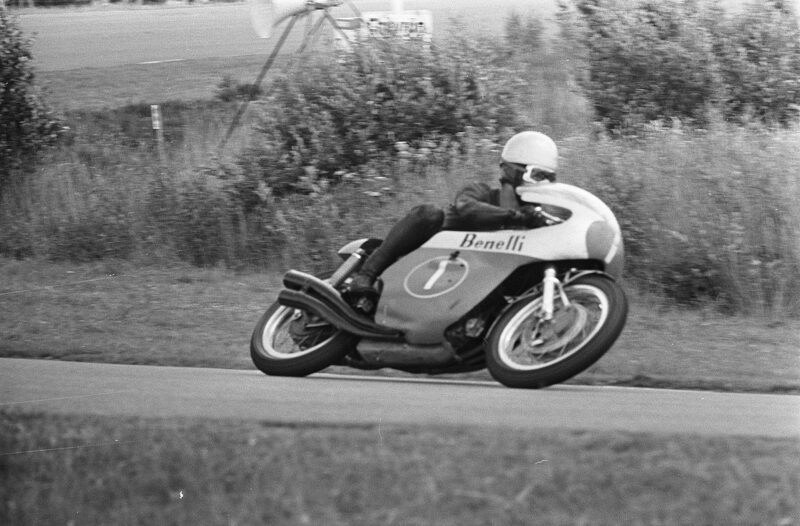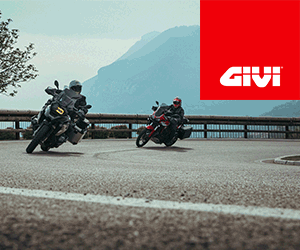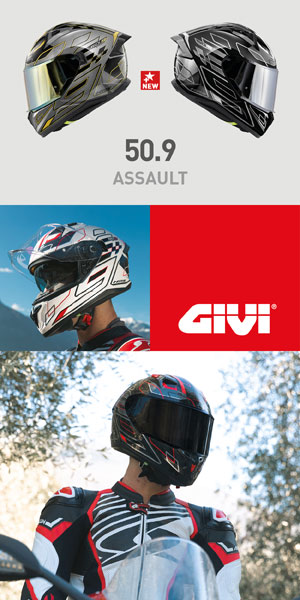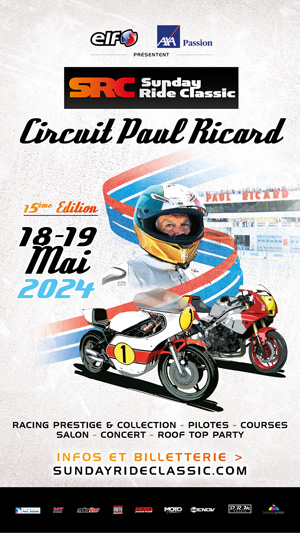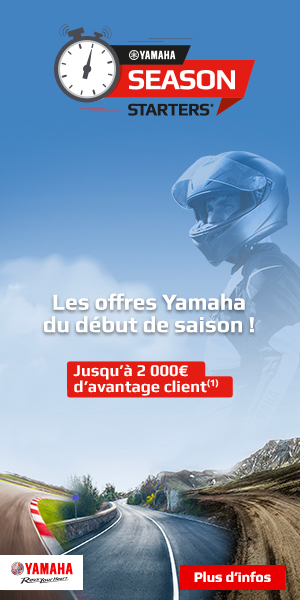Monza 1973, a dark date in the history of motorcycle Grands Prix. During the 250cc race, two riders died, notably Jarno Saarinen, one of the greatest talents we have seen evolve. The almost mythical image of the Finnish champion somewhat eclipsed the other unfortunate, Renzo Pasolini. Together, let's look back at the career of this uncrowned champion.
Renzo, born in Rimini, was interested in motorcycles from a very young age. Born in 1938, it was his father who instilled his passion, which was first expressed on motocross. He began his career on earth in his late twenties, and we already noticed his atypical profile, very party-oriented. Like many other drivers, he smokes, which does not prevent him from performing. Then, he decides to turn to the track on the handlebars of a
Aermacchi. In 1964, after his military service, he raced for the first time in the world championship at the Grand Prix des Nations in Monza.
Now well established at the national level,
“Paso” is one of the title contenders in the Italian championship. In 1965, he failed in second place in the 250cc ranking, and third in 350cc, notably beaten by
Giacomo Agostini. The two had met before. A rivalry is brewing. He drove Aermacchis in the few World Cup rounds he competed in, but was used to Benelli in Italy. In 1966, he finally showed himself efficient in 250 tsp as
350 tsp, category in which he finished 3rd worldwide.
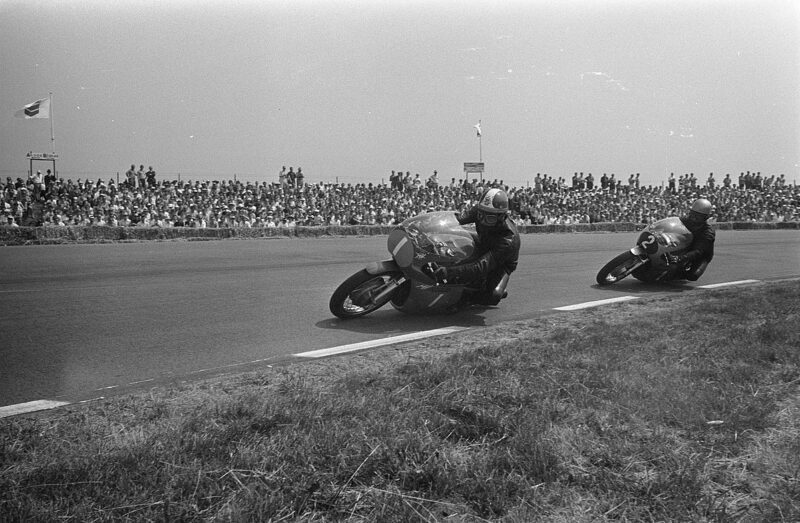
Agostini in front of Pasolini, at Assen in 1970. Photo: ANEFO
Renzo visits Benelli full-time from 1967. He does not stand out against the tough competition, but is not among the elite either. Everything came to a head in 1968. This time, he was in the mix, whether in 250cc, 350cc and even 500cc, with a 2nd place at the Grand Prix des Nations. He is 350cc world vice-champion, but far from a Giacomo Agostini imperial on MV Agusta. No regrets. The real chance of victory is undoubtedly in the 250cc, which the “King” is not competing for. Be careful, the grid was not devoid of talent however.
The Benellis were comfortable in quarter-litre form, and Pasolini's very committed driving style suited the displacement quite well. From then on, he focuses only on this class. Unfortunately, a nasty injury caused from the
German Grand Prix, second round of the season, forced him to leave the handlebars to
Kelvin Carruthers. Once the collarbone is restored, Renzo returns well motivated, but there is fire: Carruthers had imposed himself in his absence. The Italian wins at Assen, taking advantage of the breakdown of Rodney Gould, then triumphs again at
Sachsenring, with the manner. In Czechoslovakia, “Paso” does it again: He is unstoppable. Carruthers stands at a safe distance, he's not about to let an opportunity like this pass him by.
The battle for the title is intense, with a
Santiago Herrero on fire, without forgetting the British
Rod Gould and the Swedish
Kent Andersson. But Pasolini made a mistake, he fell in Finland when he had to score to survive. Worse still, on the terrible Imatra circuit, he was injured again. Title hopes are dwindling. His absence from the Nations GP seals his fate, he can no longer be titled. He must see his replacement Kel Carruthers lift the trophy after a crazy outcome in Preluk, Yugoslavia, where four drivers could claim the crown. Despite three successes, Paso is 4th overall.
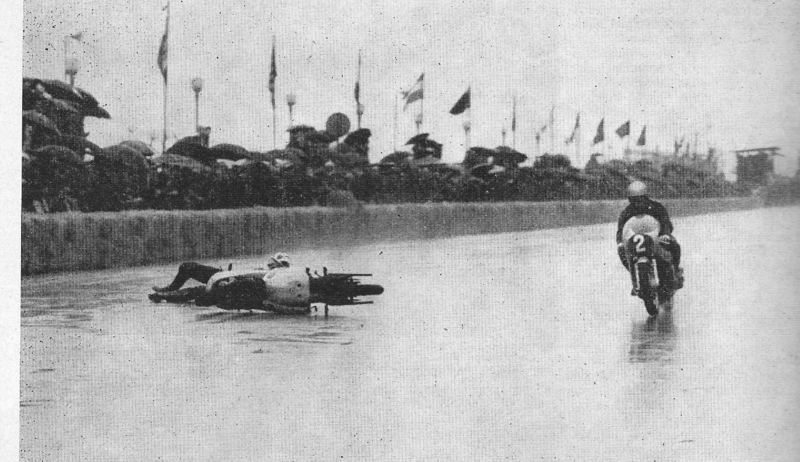
Rimini, 1970.
Switched to 350cc still for Benelli, Pasolini is far from being ridiculous but is once again ahead of
the Australian, and of course, the eternal Agostini. This rather disappointing season pushed him to sign with Aermacchi, now in contention with Harley-Davidson. Throughout 1971, he developed the product of the astonishing Italian-American mixture, only to return in 1972. In 250cc as in 350cc, the machines were in the game. In this last category, Agostini is untouchable. In a quarter of a liter, it manages to tickle Jarno Saarinen, new extra-terrestrial of the world. The two took turns winning but ultimately, an engine failure in Finland left the way clear for Saarinen, who won his one and only world title in front of his home crowd. Paso's victory in Spain, a round later, reduced the gap to just one point but it didn't matter, he is beaten again.
And finally, comes 1973. As Aermacchi becomes Harley-Davidson, Renzo is already third in France, for the opening Grand Prix. While the championship is in full swing, the team has remained in Italy to develop a liquid-cooled engine, which is due to debut at Monza. Alas, the trial was only short-lived. In the first turn,
Great Curve, Pasolini mysteriously misses then is hit by Saarinen, third. His Harley bounced off the rails, fell on Jarno and a huge pileup involving around ten riders ensued. Saarinen and Pasolini were the only two killed instantly.
The circumstances of the accident remained unclear for a long time, but we returned to this sad episode in detail in
the article dedicated to Saarinen, which you can find by clicking on this highlighted sentence. The death of Pasolini, like his Finnish rival, leaves a void. At 34, he had managed to establish himself as one of the best 250cc riders of the period. In 1986, Ducati released the “Paso”, in homage to the Monza sacrificed rider.
Did you know this pilot and his tragic fate?
Tell us in the comments!
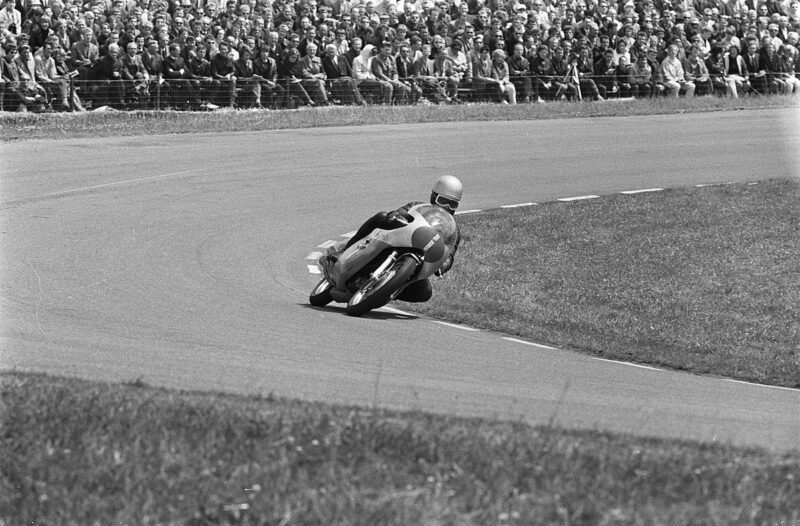
Pasolini in 250cc, here at Assen in 1969. Note his helmet and mask, unlike many others who opted for the safer integral bikes. Photo: ANEFO
Cover photo: ANEFO










